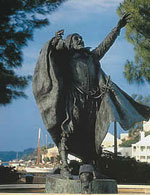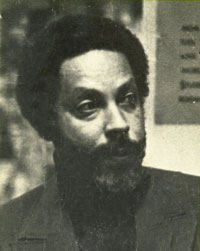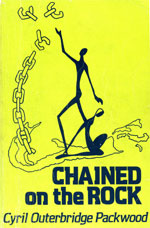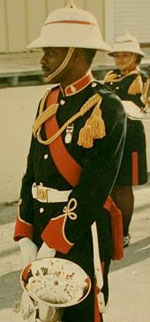

|
This month
Death of Sir George Somers Sir George Somers died in Bermuda on November 9, 1610—17 months after the Sea Venture shipwreck gave him a permanent place in the annals of the New World. His heart (and entrails) were interred in St. George’s - where his statue (above) stands - and his body was shipped back to his home town in Lyme Regis, Dorset, England, where he was buried with full military honours. Somers’ death at age 56 ended a life of adventure on the high seas that had brought him wealth and fame. Somers, who was born in 1554 to a family of modest means, made his fortune as a privateer—seizing Spanish ships at sea and making off with their bounty, with the sanction of the British monarch. By the time of the Sea Venture’s voyage, Somers, who was a part-owner of the vessel, had led numerous expeditions to the West Indies, as well as one to Virginia in 1604, and had earned a reputation for being one of Queen Elizabeth’s most masterful mariners. In June 2, 1609, the Sea Venture, carrying 150 passengers, left Plymouth bound for Jamestown, Virginia. Among those on board was Sir Thomas Gates, the governor of Virginia. The Sea Venture was the flagship of a relief fleet of eight ships. Their holds were stocked with food and other supplies for the fledging colony in Jamestown. Somers was admiral of the fleet. On July 24, about 1,000 miles west of the Azores, the Sea Venture sailed into a hurricane and became separated from the other ships. For the next four days, passengers battled the elements and worked around the clock, bailing out their leaky vessel. They believed all was lost, but on July 28, the Sea Venture was miraculously stuck between two rocks off St. George’s and the exhausted but relieved passengers were able to scramble ashore. Bermuda was known as the Isle of Devils, but the castaways encountered a paradise of plenty—they could feast on everything from prickly pears to fish, birds, turtles and pigs left behind by Spanish mariners. Once the survivors had recovered from their ordeal, Somers and Gates oversaw the construction of two new ships, using Bermuda cedar and whatever they could salvage from the Sea Venture. Their Bermuda sojourn was not a peaceful one. Somers had to contend with at least two mutinies and had one man shot to death for sedition. But after 10 months, the 80-ton Patience and the 30-ton Deliverance set sail for Jamestown on May 10, 1610. Two passengers, Christopher Carter and Edward Waters, remained behind in Bermuda. Arriving at their destination two weeks later, they found a colony in distress, with only 60 of the original 500 settlers alive. Somers and Gates decided to abandon Virginia the next month and on June 7 set sail in the Patience and the Deliverance and two other ships. They were bound for Newfoundland, where they had planned to load up with additional supplies, before returning to England. Before reaching the open sea, they met three relief ships under the command of Lord de la Warr that was headed for Jamestown so they turned back. Jamestown however was in need of even more supplies and Somers undertook to return to Bermuda in Patience. He took sick during the journey, and died on the island. One report attributed his death to a “surfeit of pork.” His nephew and heir Matthew Somers ignored Somers’ dying wish for the Patience to complete its mission by returning to Virginia. He had Somers’ heart and entrails removed and sailed to England on board the Patience with Somers’ embalmed body. Somers was buried in the Church of St. Candida and Holy Cross in Dorset on July 4, 1611. His heart is buried in Somers Gardens, St. George’s. Sources: Bermuda—Five Centuries by Rosemary Jones; The Twinnng of Lyme Regis and St. George’s, Bermuda—The History of Admiral Sir George Somers by Richard J. Fox MBE |
|
> Kiwi finds Bermuda roots Island prepares for 400th birthday Bermuda’s 400th anniversary celebrations will kick off on Front Street on January 3, 2009 with “a musical journey” entitled ‘The Ties that Bind’. New Zealander Bill Grant has traced his roots to former slave James “Jemmy” Darrell, whose piloting feat earned him his freedom in 1795. Books by two of Bermuda’s best-known writers have hit bookstores. Veteran journalist and author Ira Philip writes about the life of Alma “Champ” Hunt, one of Bermuda’s greatest cricketers in his new book, Champ! The One and Only Alma Hunt. Exhibit honours veterans Bermuda comes to a standstill at 11a.m. every Remembrance Day on November 11 to honour its war dead. |
|||||||||
| © 2008 Bermuda Biographies All rights reserved |
|||||||||||



